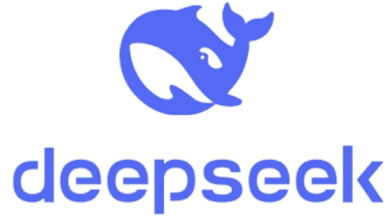from conversations to content marketing intelligence —

In the realm of B2B marketing, social listening often takes a backseat to its more glamorous counterpart, social media monitoring. While monitoring focuses on likes, shares, and mentions, social listening delves deeper, tracking sentiment, trends, and conversations that unveil what your audience truly cares about. For B2B companies, this tool is not just a luxury but a necessity for driving effective marketing strategies and enhancing results.
But what makes social listening so potent for B2B businesses and how can it be seamlessly integrated into your content marketing strategy? Let’s explore what it entails, how it operates, and why it should be central to your approach.
What is B2B social listening?
Social listening involves tracking online conversations and analyzing them to gain insights into customer behaviors, preferences, and challenges. In a B2B context, this entails going beyond customer feedback to discover opportunities in industry discussions, competitor actions, and broader market trends.
Before delving deeper into today’s topic, let’s address a common misconception about B2B conversations. Many marketers believe that unlike B2C, where customer sentiment is vocalized, B2B discussions are less visible, often confined to niche spaces like LinkedIn groups, industry forums, or webinar comment sections.
While there is some truth to this, especially in highly specialized industries, the reality is that B2B audiences are indeed conversing; you just need to know where and how to listen.
The significance of B2B social listening
I firmly believe that social listening and content marketing are intertwined. The insights gleaned from listening can elevate your content from generic to targeted, ensuring it addresses real issues and resonates with your audience. Here’s how:
- Creating audience-focused content: Understanding the prevalent topics and challenges in industry conversations enables you to tailor your content to address them. For instance, if a regulatory change is stirring discussions, crafting a guide or analysis can establish your brand as a valuable resource.
- Identifying content gaps: Social listening tools can pinpoint questions or topics your competitors have not addressed. By filling these gaps, you can position your business as a thought leader and attract valuable traffic.
- Real-time relevance: Social listening empowers you to respond promptly to trending topics or events. For instance, if a industry conference sparks debate, publishing a timely blog or LinkedIn post can boost visibility and engagement.
- Refining existing content: Feedback gathered from social listening can aid in enhancing underperforming content. Analyzing audience sentiment can unveil why a particular piece has not resonated and what adjustments are needed.
- Benchmarking competitors: Social listening serves as a valuable tool for monitoring competitors. Understanding what resonates with their audience and what falls flat can help fine-tune your own strategies.
Despite the evident benefits, it has been noted that social listening is a tactic that struggles to showcase its value and is frequently overlooked. As someone who has been in content for over 15 years, I find this surprising. Any competent marketer would attest that the more audience insights you gather, the better. So, it’s baffling why many are still hesitant to leverage social platforms to comprehend their customers better, alongside other data sources like search data, analytics, and market research. Perhaps it’s due to a lack of time, social platforms not being taken seriously in B2B, or a limited understanding of how to utilize the data.
Let me present a few instances of transitioning from conversations to content marketing intelligence.
Three examples of incorporating social listening insights into your B2B content strategy
Hotel booking frustrations on Reddit
Business: Company providing software for hotel booking and customer experience management
Target audience: Hoteliers
Reddit is a valuable platform for content ideation, especially with its numerous travel-related subreddits. After researching the best subreddit and recent popular posts on “hotel booking frustrations,” I stumbled upon this discussion.
It became evident that travelers exhibit varied booking habits, influenced by factors like destination, season, and personal preferences. Consequently, hoteliers require flexible, user-friendly software to support dynamic pricing, personalized experiences, and seamless communication to cater to these diverse needs and enhance the guest experience.
If I were devising a content strategy for the software company, I would focus on themes such as:
- How the software facilitates flexible booking windows and dynamic inventory management
- Showcasing features like surge pricing, automated reminders, or dynamic inventory updates to handle peak seasons efficiently
- How the software enables personalization, such as customizing room options or offering tailored promotions
- How the platform minimizes booking errors and provides real-time availability to reassure guests
Environmental concerns on YouTube
Business: Wholesale distribution company specializing in eco-friendly packaging
Target audience: Beauty retail buyers
Monitoring comments on a popular YouTube video on sustainable packaging can guide an eco-friendly packaging company’s content strategy. By analyzing the data, it’s evident that consumers express frustration with current refill models, skepticism towards greenwashing, and a demand for improved design and recyclability. This insight can shape content angles like:
- Educating on how our packaging avoids common design pitfalls
- Highlighting recyclability, compostability, or innovative materials used in our products
- Emphasizing the cost-efficiency of refill models, appealing to eco-conscious consumers
- Addressing misconceptions about refill pouches and their environmental impact, providing transparency on materials and processes
These insights can inform blog posts, social content, and broader campaigns to address audience concerns and position the brand as a leader in sustainable packaging.
Tax discussions on Instagram
Business: Accountancy firm
Target audience: Small business owners
In a simple application of social listening in the professional services sector, tax conversations are prevalent on social media, particularly Instagram. Observing the topics garnering the most engagement can provide valuable insights for content ideation. Delving deeper into audience inquiries can help create standout content.
A reel about income tax on Instagram has elicited significant engagement. Analyzing the comments reveals recurring themes such as queries on the impact of corporation tax on dividends and interest in tax advantages of contributing to pensions versus dividends. This feedback underscores a strong demand for comprehensive, clear, and accurate financial guidance tailored to small business owners, international operators, and those seeking optimized tax strategies.
As the content strategist for the accountancy firm, this data offers a plethora of ideas to dispel tax misconceptions, provide actionable advice, and simplify complex topics with visuals or real-life examples.
While these are fundamental yet effective examples to kickstart your journey, there is much more to explore. As you become more adept at social listening and the array of tools and tactics available, the real excitement begins when you incorporate diverse analyses from various sources into your strategy, as I do for my clients at . It’s undoubtedly one of the most rewarding aspects of my job.
Overcoming common challenges in B2B social listening
Despite the benefits, implementing social listening in a B2B context can pose challenges, including:
- Limited conversations: Unlike B2C, where social media buzzes with customer feedback, finding B2B conversations can be tricky, especially in niche industries. Industry-specific websites like G2 or Capterra for the SaaS market become invaluable in such cases.
- Data overload: The data volume generated can be overwhelming. Social listening software aids in filtering the noise, and AI tools like ChatGPT can assist in summarizing insights, focusing on critical conversations.
- Linking insights to outcomes: Connecting social listening insights to measurable business outcomes can be a significant challenge. However, whether it’s enhancing lead quality or boosting brand awareness, several metrics can help track progress, as we’ll explore shortly.
How to implement a B2B social listening strategy
- Set clear objectives: Define your goals, whether it’s identifying content opportunities, enhancing customer service, or monitoring competitor activity.
- Choose the right tools: Platforms like Brandwatch and Sprout Social offer robust capabilities for tracking and analyzing conversations. If budget constraints exist, there are still ample free digging opportunities, as demonstrated in earlier examples.
- Analyze the data: Once insights are gathered, seek patterns and actionable insights. Are there recurring complaints about a competitor’s service? Commonly asked questions? A trending topic engaging your audience?
- Take action: Utilize insights to refine strategies, whether it’s tweaking messaging and FAQs, creating a content series, or optimizing existing landing pages.
Some marketers view social listening as resource-intensive, particularly for mid-sized businesses with limited budgets. However, starting small and focusing on key objectives can yield significant returns without overwhelming your team.
Measuring the impact of social listening
Measuring the impact of B2B social listening on content involves qualitative and quantitative analysis. Here’s how to begin:
Track content performance metrics
- Engagement rates: Monitor likes, shares, comments, and click-through rates on content inspired by social listening insights
- Traffic sources: Use GA4 and Google Search Console to assess traffic sources and organic performance
- Conversion metrics: Track how content leads to conversions, such as newsletter sign-ups, inquiries, or sales
Content relevance
- Share of voice: Analyze your brand or content mentions compared to competitors in conversations
- Share of model: Monitor your brand’s visibility on AI platforms like ChatGPT
- Keyword trends: Evaluate if keywords or topics from social listening align with emerging trends and increased engagement
Feedback analysis
- Community sentiment: Use social listening tools to detect shifts in audience perception of your brand or content
- Direct feedback: Track qualitative feedback through comments, messages, or surveys referencing content usefulness or relevance
- Sentiment analysis: Examine sentiment changes in conversations before and after posting content informed by social listening
Lead quality and volume
- Lead tracking: Measure the quality and quantity of leads generated from campaigns or content shaped by social listening
- Sales metrics: Track how insights have impacted customer interest and contributed to the sales pipeline
Why B2B social listening is crucial for future-proofing your content strategy
With GenAI advancements and evolving customer expectations, staying ahead as content marketers is vital. Social listening offers a practical, results-driven method to enhance B2B marketing performance. By tuning into relevant conversations, brands can uncover valuable insights, refine strategies, and forge stronger connections with their audience.
Integrate social listening into your strategy
To learn more about leveraging social listening for business and maximizing your content’s impact, please contact us.
FAQs
-
How does social listening differ from social media monitoring?
Social listening delves deeper into sentiment, trends, and conversations, providing insights beyond likes and shares, unlike social media monitoring.
-




